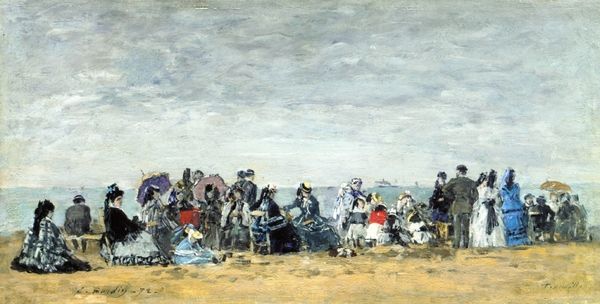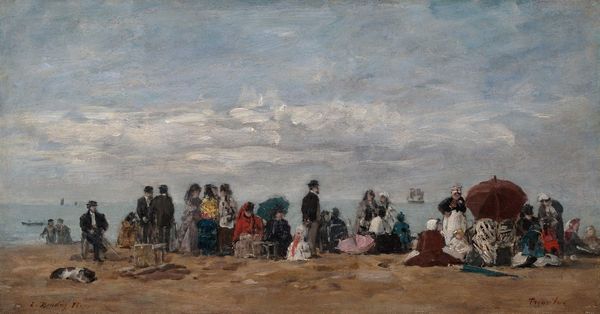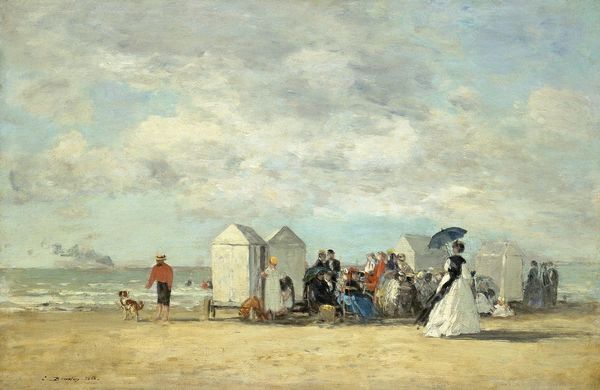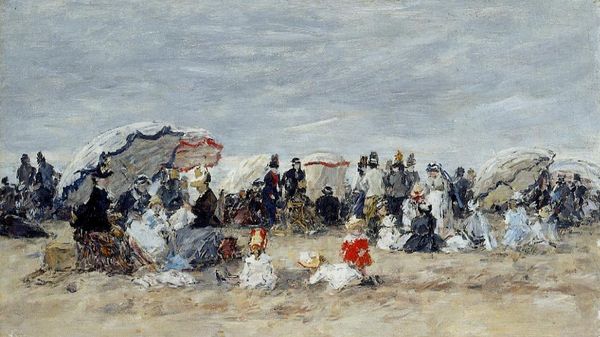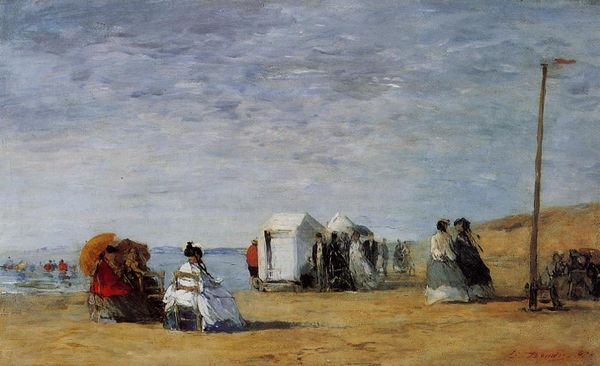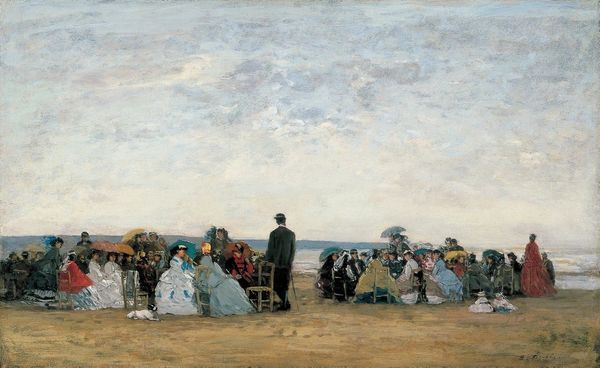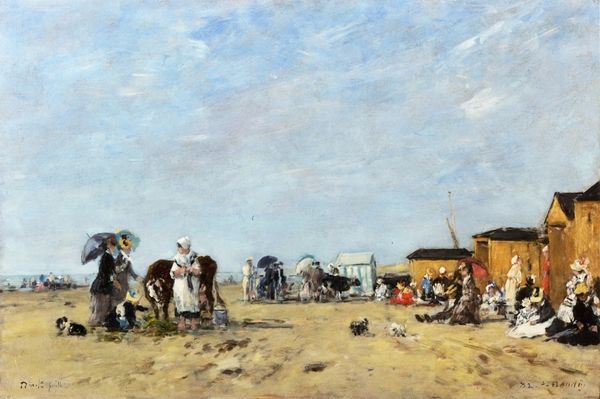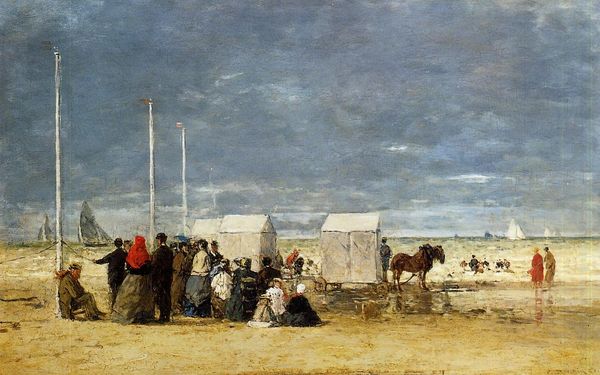
painting, plein-air, oil-paint
#
water colours
#
painting
#
impressionism
#
plein-air
#
oil-paint
#
landscape
#
oil painting
#
genre-painting
Dimensions: 26 1/2 x 41 in. (67.31 x 104.14 cm) (canvas)35 7/8 x 50 1/4 x 4 in. (91.12 x 127.64 x 10.16 cm) (outer frame)
Copyright: Public Domain
Editor: This is Eugène Boudin’s "Vacationers on the Beach at Trouville," painted in 1864, with oil on panel. The painting features numerous figures elegantly dressed at the beach; it feels like peering into a bygone era of leisure and propriety. What echoes of the past do you perceive in this work? Curator: I am particularly struck by how the sky, dominating almost two-thirds of the canvas, seems to mirror the social atmosphere of the beach. Notice the subtle gradations of gray and white, suggesting a certain reserve and formality that permeates the gathering below. The figures themselves, rendered with delicate brushstrokes, appear almost like ephemeral symbols of a fleeting moment in time. Doesn’t that remind you of similar gatherings or even a class of society that seemed prevalent during those times? Editor: I hadn't thought of the sky's symbolism that way, I suppose, and now I am wondering if that large part symbolizes change? Was the growing middle class changing? Curator: Exactly! The beach itself becomes a stage upon which these social dramas unfold. Umbrellas are shielding pale skin from the sun, becoming almost like banners of social standing. The dark, heavy attire of the ladies juxtaposed against the openness of the sea creates a fascinating tension. They suggest an emergence but still bound to very old strict codes. Editor: It is really insightful, how those accessories take a whole new significance and symbolic status, beyond their functional purpose. Curator: Yes, and also consider the artist’s choice to depict the sea only as a distant horizon line. Boudin subtly conveys the power and unpredictability of nature versus the very controlled, almost artificial society assembled on the shore. He uses symbolic representation very precisely to showcase those emotional nuances that marked this cultural transition. Editor: I see. Thank you; thinking about how each element reflects deeper societal tensions makes the work incredibly more rich and relatable. Curator: My pleasure. Hopefully this dialogue prompts us to look at the cultural emblems from the past that repeat today and see how symbols evolve over time, to maybe find something new.
Comments
minneapolisinstituteofart almost 2 years ago
⋮
This is one of Eugène Boudin's many paintings of the Normandy coast in northern France. Around 1862 Boudin began working at Trouville, a summer resort served by the new train lines from Paris. There, well-to-do city dwellers enjoyed a new type of vacation: the beach holiday. Some people actually swam (wearing the daring new bathing costumes), but many gathered just to enjoy the sea air and socialize. Boudin's beach scenes, a new subject for painting, sold rapidly to Paris collectors. Most were smaller than this - just the size for Parisian parlors. This was the first painting purchased by the Minneapolis Institute of Art after it opened in 1915.
Join the conversation
Join millions of artists and users on Artera today and experience the ultimate creative platform.
